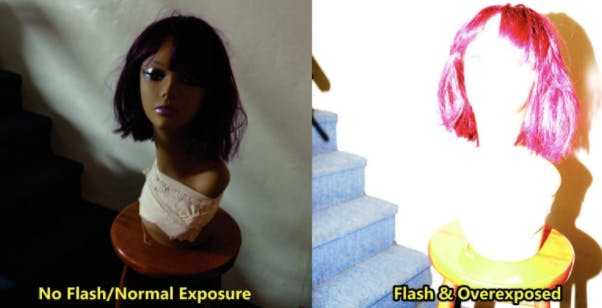TL;DR Science: Are Ghosts Real?
By Thomas P.
December 01, 2021 · 4 minute read
Physics
Mathematics
Ghosts are a ubiquitous part of folklore in many cultures around the world, and they have gained much popularity as a result of TV shows depicting ghost hunters and supposed supernatural events in which ghosts were a part of. In fact, 2 in 5 Americans believe in ghosts and 1 in 5 say that they have seen one, thus making a significant portion of the population superstitious. These ghost hunters purport that ghosts are real according to their so-called research (which is typically frivolous), but are they actually?
The simple answer is no. However, this statement is actually inaccurate as the statement that ghosts are real is unfalsifiable - meaning it cannot be proven nor can it be disproven.
Varying definitions of “Ghosts”
As you might expect, the definition of what a ghost is and what phenomena or supernatural powers they are supposed to have. For example, why is a ghost thought to be a spirit (which would likely not have any physical or material body), when at the same time they are also associated with throwing axes or slamming doors? Many ghosts are thought to be invisible, but why are they also associated with white images? Evidently, these varying (speculated) associated phenomena are contradictory and hinder the argument that they are in fact real.
Likely reasons for sightings
Likely the only reason why people believe that ghosts are real is because it is such a simple explanation for a wide variety of phenomena. It could be that people who believe that they have encountered a ghost have merely experienced an optical illusion or it could be they were experiencing a hallucination. For example, scientists have found that human peripheral vision is more likely to notice illusions that are manifestations of our brains. Such hallucinations are likely the result of other various causes: mental illness, drugs, a transition from sleep to being awake. Ghosts sightings could also be the result of a poorly understood weather phenomenon called ball lightning. Interestingly, other explanations have stated that exposure to weak magnetic fields, infrasound, or carbon monoxide could cause hallucinations such as the above. Pictures or videos of ghosts, such as the following below are often just overexposed, or can be explained by some other lighting phenomenon.

The left and middle polaroids (which may be construed as showing a ghost) have flash and are overexposed, while the one on the right has normal exposure.

Example of Doris Bither
The example of Doris Bither is quite interesting as it is a quintessential case of why someone might believe they have encountered a ghost. Her situation can only be considered as quite saddening. First, Bither had substance use issues as both a drug addict and an alcoholic. She was divorced, and was living in a dysfunctional family. In addition, the family frequently claimed that ghosts regularly interfered with their lives. It is described: “We had no way of knowing just how utterly disturbing of a life she really had led” by investigator Barry Taff of the incident. One night, it was claimed that she was assaulted by a ghost; however she only reported the incident to a friend a significant period of time afterwards. Barry Taff investigated the incident and found that it was most likely that the events she told never happened although he did claim some paranormal activity, by citing Doris’ personal anecdotes and a few of his own personal experiences within the house. Taff writes “extraordinary claims require extraordinary evidence, and while there was plenty of [anecdotal] evidence that we were dealing with real paranormal phenomena, it very likely had nothing whatsoever to do with [ghosts], except in the mind of Doris and her children”.
Lessons
The example above proves the importance of critical thinking and an understanding of scientific principles of all constituent fields. Without being a critical thinker, one might fall for a superstition as such.
However, perhaps the most valuable lesson that can be learned from an example such as Doris Bither is the importance of merely teaching science, and the importance of scientific and logical inquiry. The Doris Bither case unfortunately represents a family of unenlightened individuals that resorted to superstition instead of scientific inquiry that could have correctly identified the phenomenon that Bither experienced.
Sources
https://skepticalinquirer.org/2021/10/the-true-story-behind-the-entity-untangling-hollywood-horror/
https://skepticalinquirer.org/2021/10/a-closer-look-at-the-entity-photographs/
https://www.livescience.com/26697-are-ghosts-real.html
https://en.wikipedia.org/wiki/Ghost
https://en.wikipedia.org/wiki/Paranormal#Skeptical_scientific_investigation
Did you enjoy this article?
About The Author
Thomas is a student at Eastside High School.